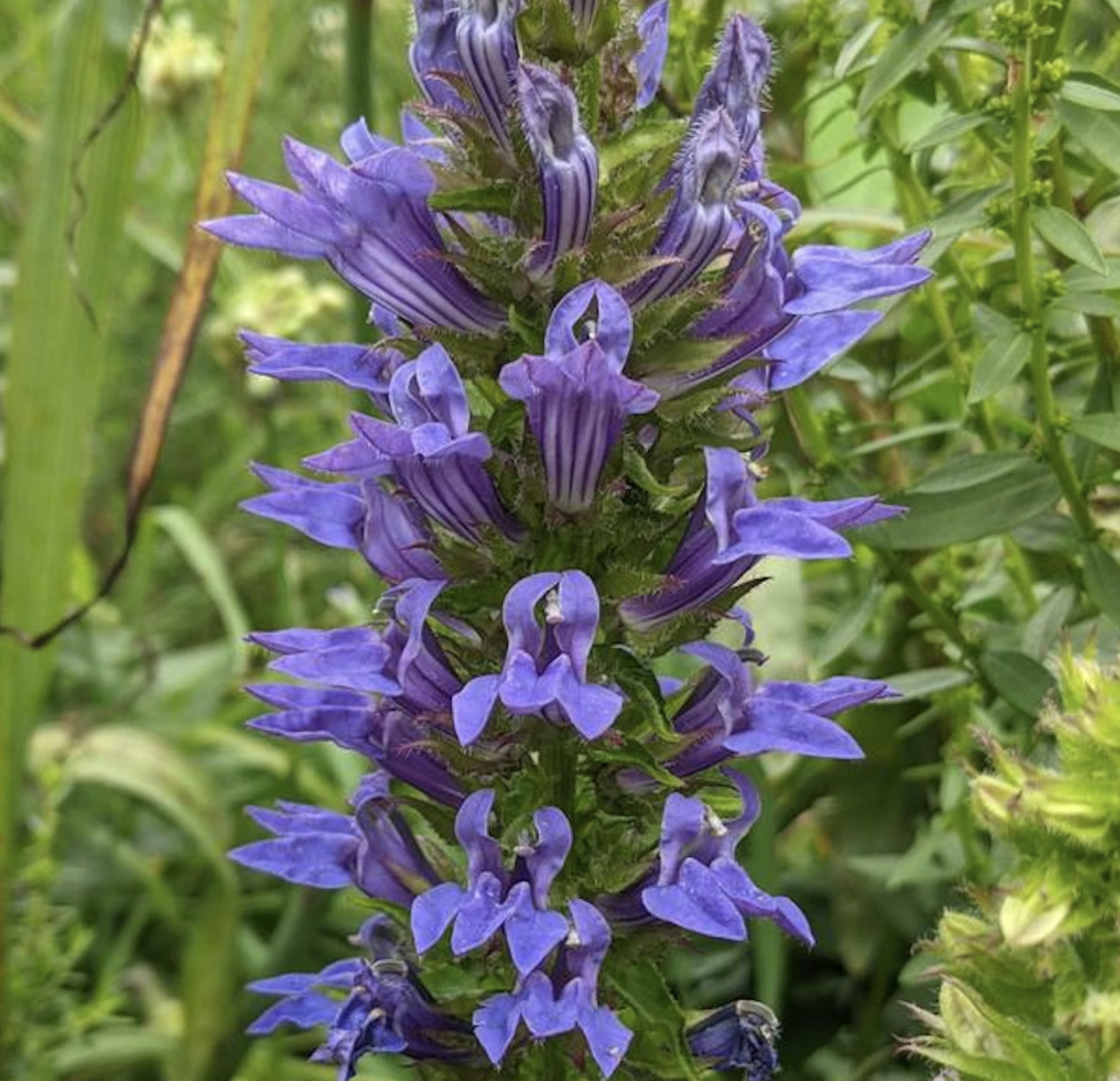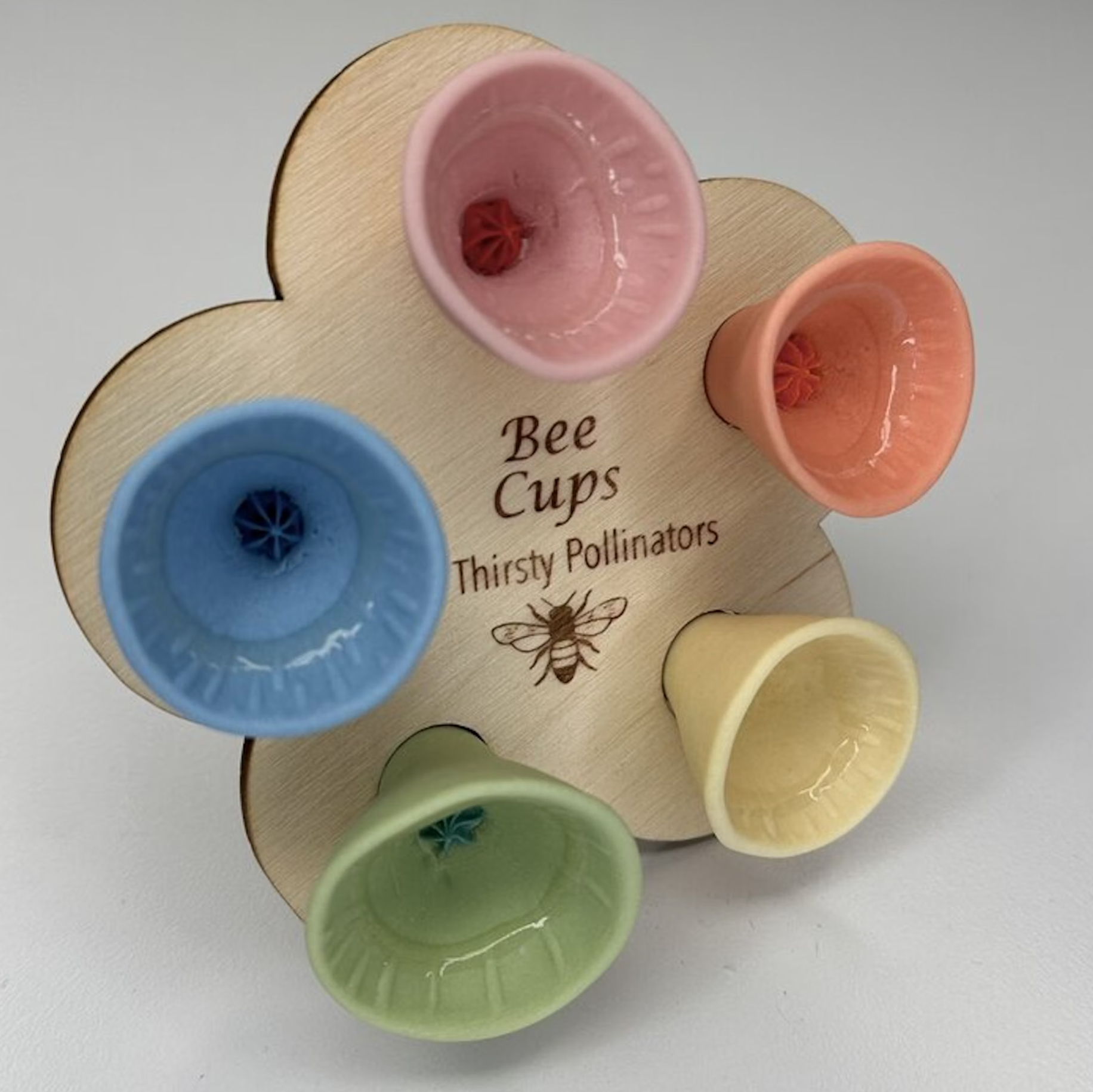Get Ready For A Summer Of Hummers! Grow These Full Sun Hummingbird Plants And Flowers
If you’re lucky enough to enjoy a sunny backyard, make sure you are maxing out on your pollinator opportunities and grow these full sun hummingbird plants and flowers
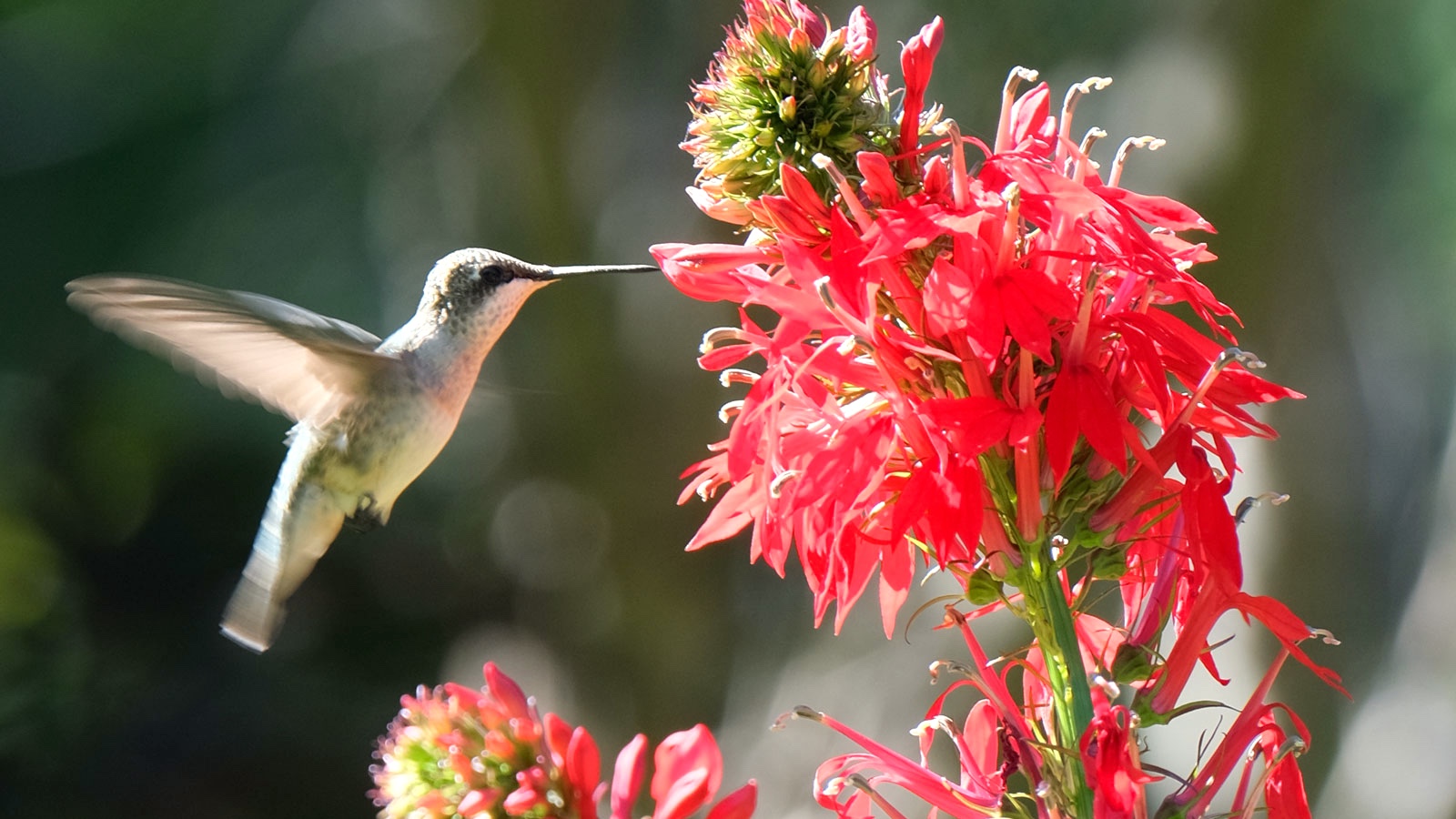
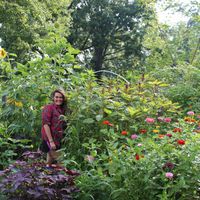
Growing a diverse range of plant types helps to entice native wildlife and pollinators – and if you plant wisely, you can grow flowers specifically to attract hummingbirds. Selecting full sun hummingbird plants and flowers will guarantee an increase in the number of miniature winged beauties that swoop into your yard in search of nectar.
Hummingbirds are of special interest to nature lovers, flitting from bloom to bloom with impressive speed. Yet even though they may dart in and out quickly, the right planting choices will bring them joy and nourishment that will keep them well and happy on their travels.
Here, we round up some of the most common full-sun flowers that attract hummingbirds to your garden. Make sure you plant some of these dynamic and easygoing flowers to attract birds so tiny and charming, you’ll quickly be looking for places to plant more!
Choosing Full Sun Plants for Hummingbirds
When it comes to hummingbird plants, full-sun species are best known for their ability to produce an abundance of blooms. Brightly colored annual, biennial and perennial plants work in tandem to extend the flowering window and increase the ornamental value of beds.
Vibrant hummingbird plants for full sun should include vining and free-standing types. Height is a key way to facilitate ease of access for these winged beauties, and ideally plants need to be in safe parts of the garden. In order to get birds flocking to your yard, make sure you plant some of these full sun hummingbird flowers.
1. Cardinal Flower
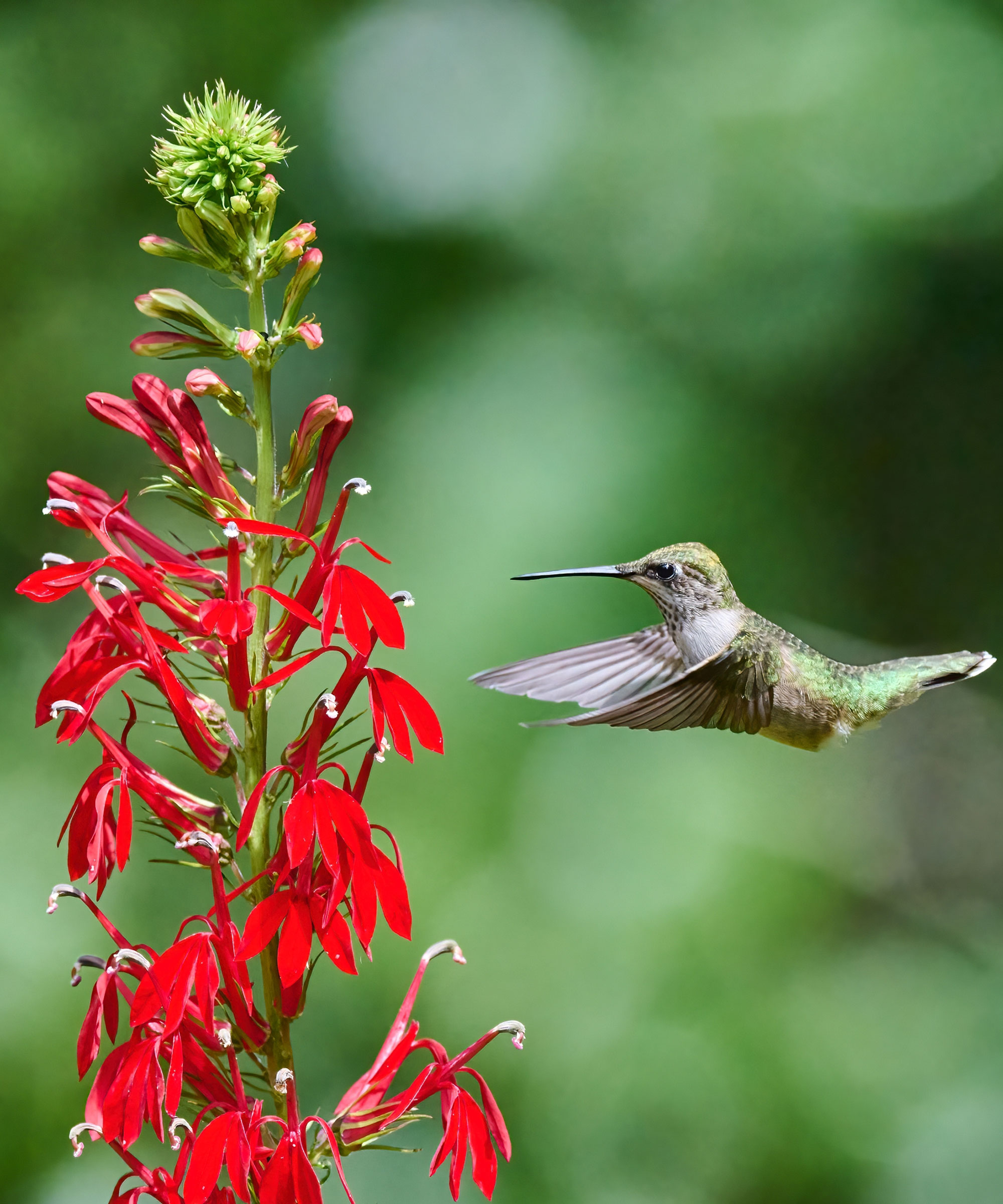
Cardinal flowers (Lobelia cardinalis) are certain to dazzle growers with their immense floral spikes. Rich, highly-saturated tones attract hummingbirds with ease, drawing a number of species with their seasonal bloom. Though perennial, most plants will be short-lived. Still, you can expect beds to reseed readily, so you can grow red cardinals year after year with ease. You can also grow grow great blue lobelia to boost your hummingbird guest list.
Good drainage will be a must, allowing growers to maintain consistent levels of moisture throughout the warmest parts of the growing season. The vibrant red American Beauties cardinal flower, available in the Gardening Know How Shop, is hardy in USDA zones 4-8.
2. Coral Honeysuckle
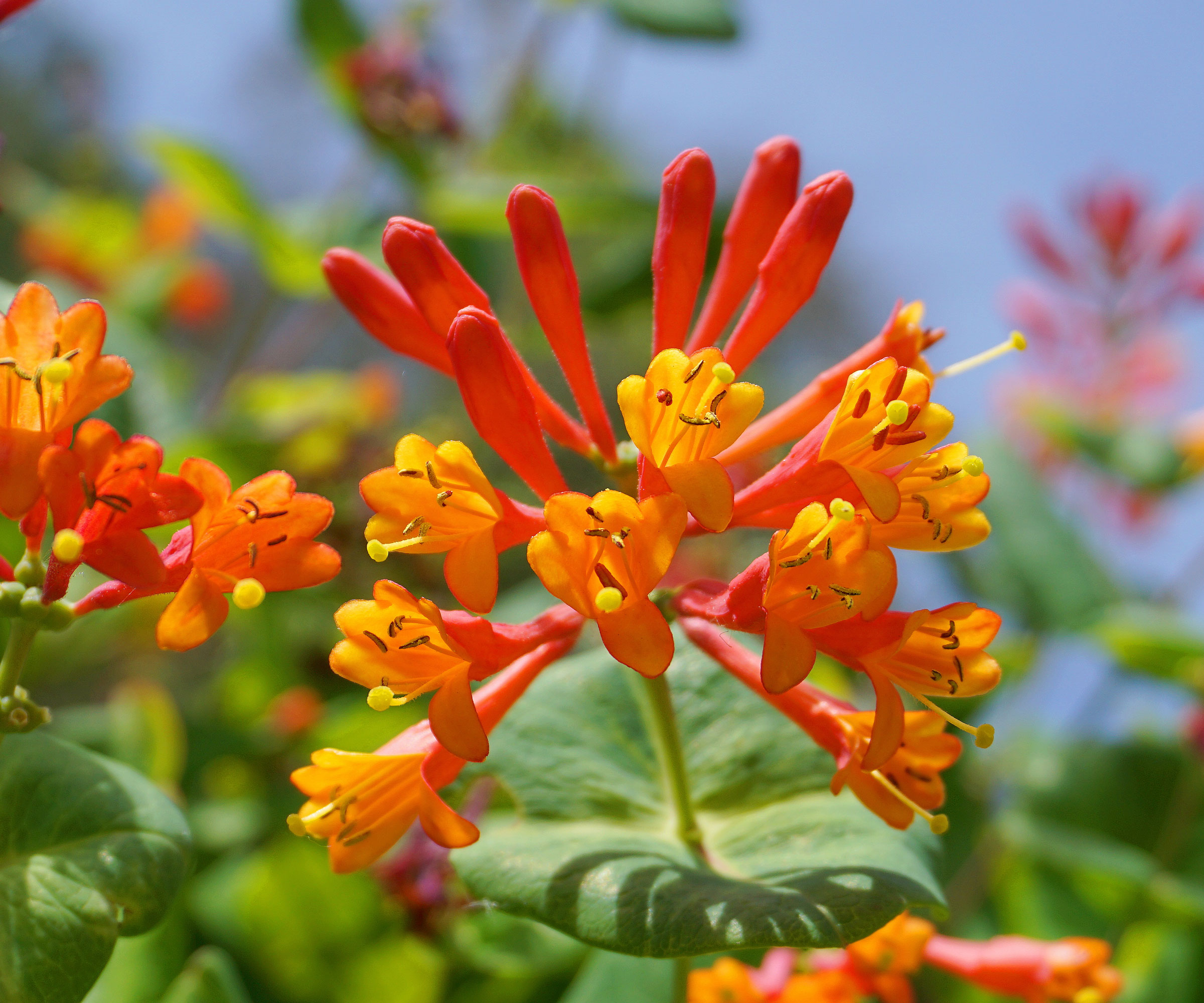
Coral honeysuckles (Lonicera sempervirens) are among the best full sun hanging plants for hummingbirds. Plants are favored for both their robust growth and status as a native species. They are incredible flowering vines for hummingbirds and generally reach an impressive size, though container specimens will be smaller.
Sign up for the Gardening Know How newsletter today and receive a free copy of our e-book "How to Grow Delicious Tomatoes".
Vines will demonstrate good tolerance to heat and drought, spilling from the edges of pots where growing conditions are ideal. Options like ‘Major Wheeler’, available in the Gardening Know How Shop, flower from late May through summer. Gardeners can expect coral honeysuckle plants to behave as a perennial in USDA zones 4-9.
3. Delphinium
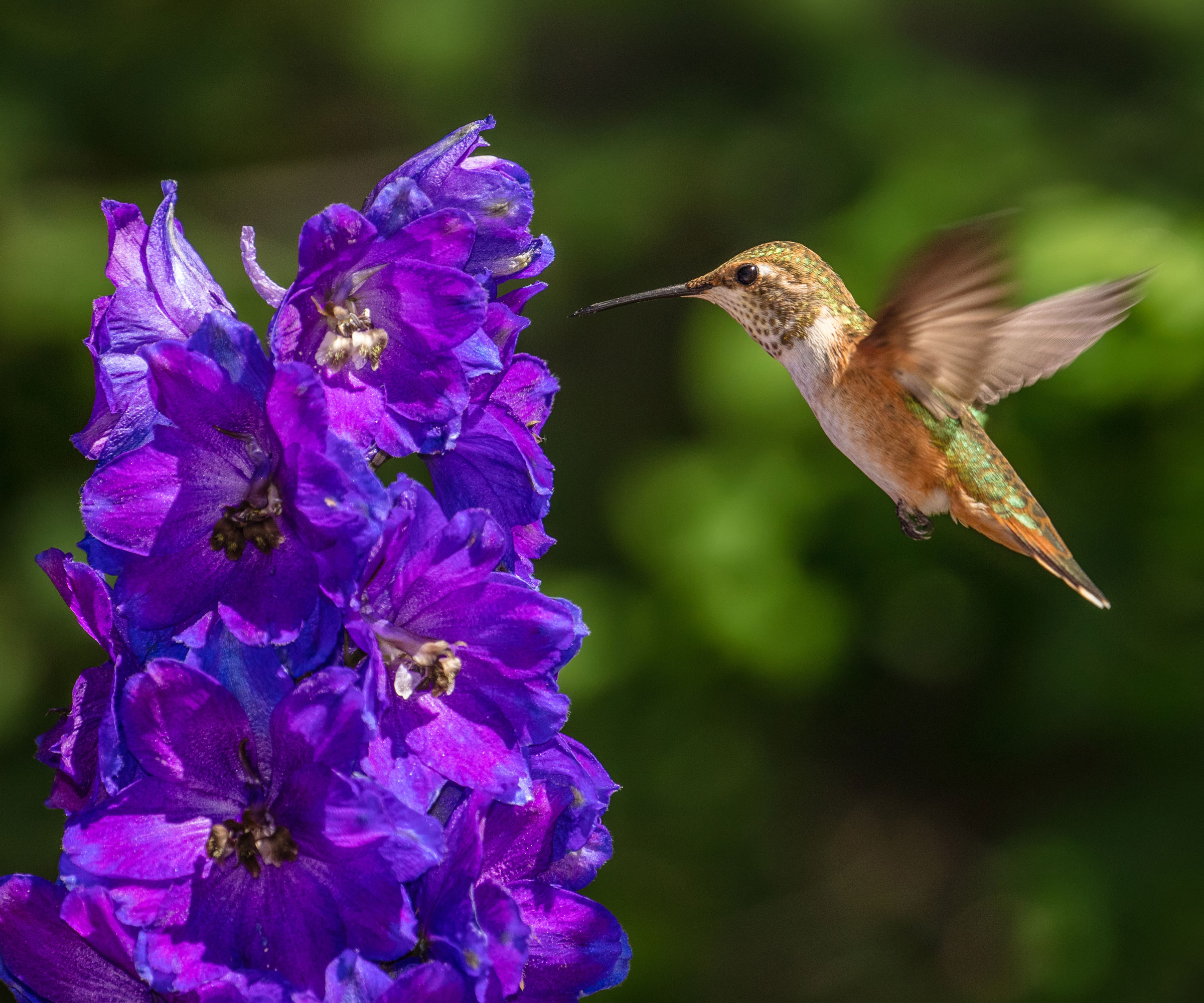
Delphiniums (Delphinium spp.) are beloved for their tall, statuesque blooms. Floral spikes open in stunning shades of white, lavender, blue and purple. Try ‘Magic Fountain Mix’ from Park Seed, available in the Gardening Know How Shop, for varied shades of lavender, lilac and white. Their early-season bloom, continuing through summer, is attractive to hummers as well as bees and butterflies.
As these statuesque full sun hummingbird plants need space, most species are best suited to established perennial beds, mixed borders and wildflower plantings. Popular types of delphinium plants for the landscape include D. cultorum, D. consolida and D. chinensis.
4. Firespike
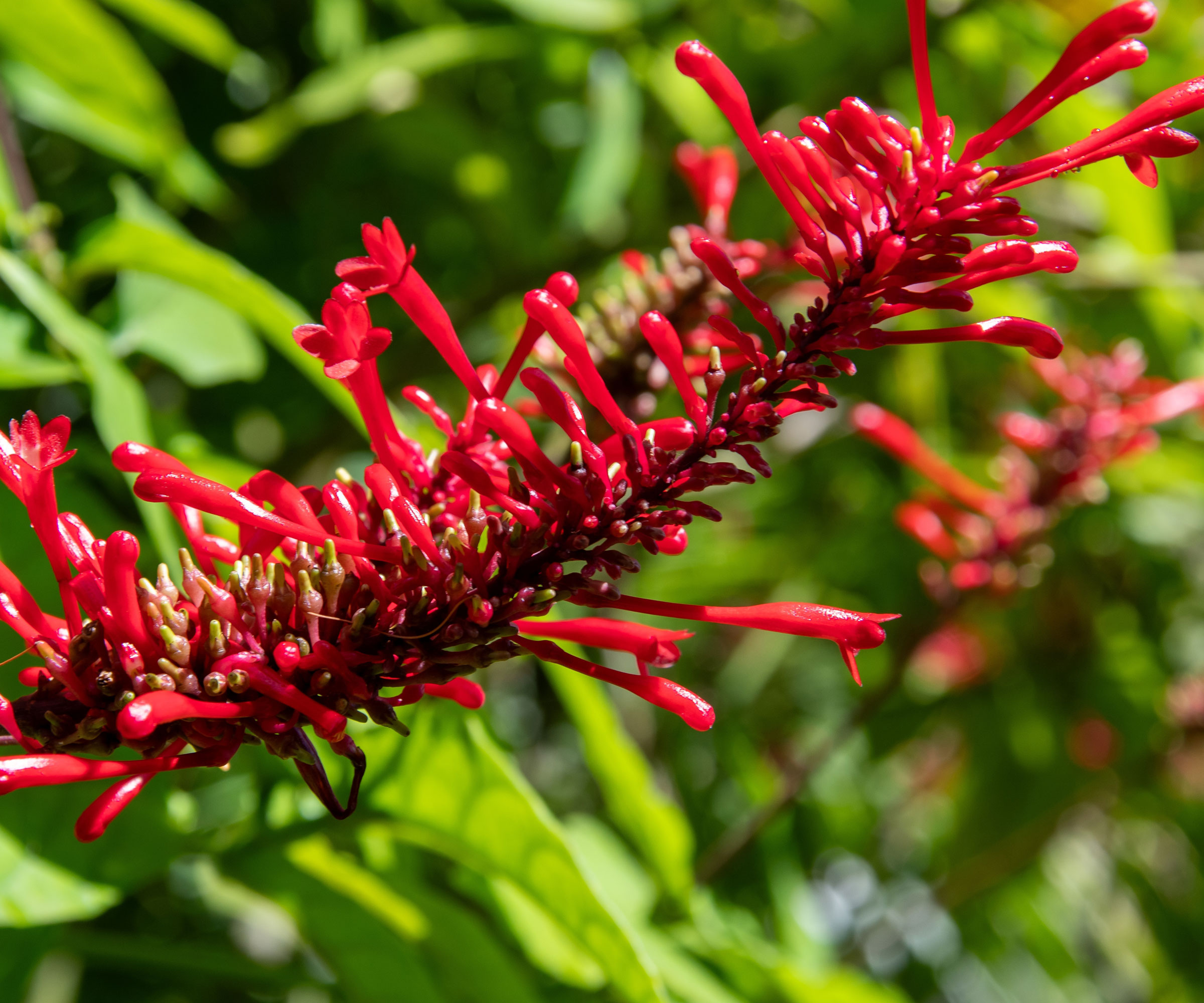
Anyone growing a firespike (Odontonema strictum) is likely to be rewarded with a profusion of brilliant red blooms. Tubular flowers are well suited to feeding by hummingbirds, providing the species with an abundance of rich nectar. Established plants will grow quite tall, making them an excellent addition to mixed beds.
The firespike plant is generally considered easy to grow, demonstrating a notable resistance to disease and tolerance to both heat and humidity. Gardeners living in USDA zones 8-11 can expect the plant to behave as a perennial, returning to bloom each spring.
5. Giant Hyssop
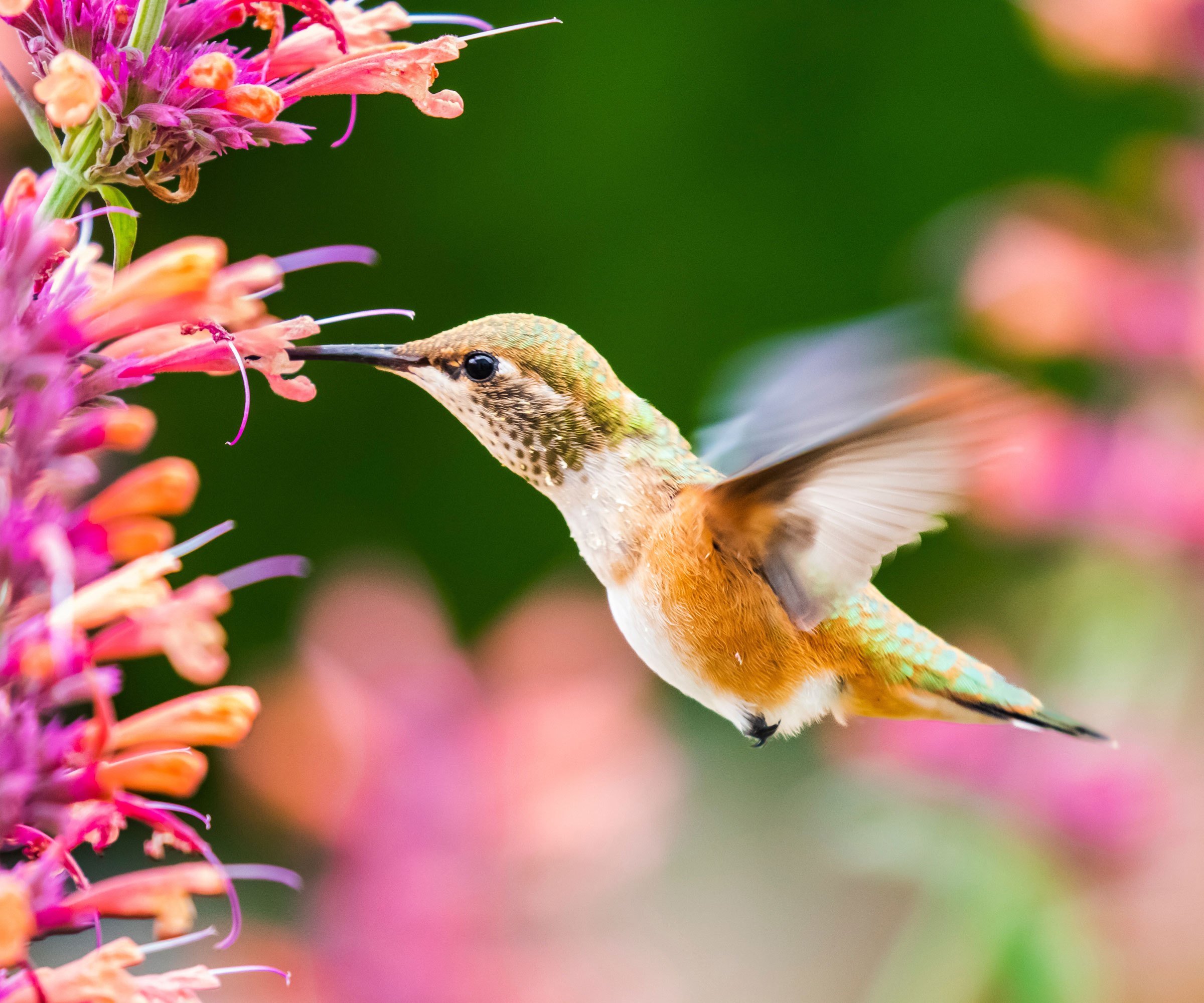
Giant hyssop (Agastache spp.) plants are treasured for their extended bloom and should be considered in any planting plans to attract hummingbirds. Persisting through the entirety of summer, floral spikes serve to attract hummingbirds and a variety of beneficial insects.
A heady fragrance enhances the beauty of this plant, making it well-suited to pots, hanging baskets and containers. Especially popular varieties for the home garden include ‘Blue Fortune,’ ‘Purple Haze’ and ‘Tango’ hyssop. Plants are generally considered hardy through USDA zones 4-10, varying by type.
6. Hibiscus
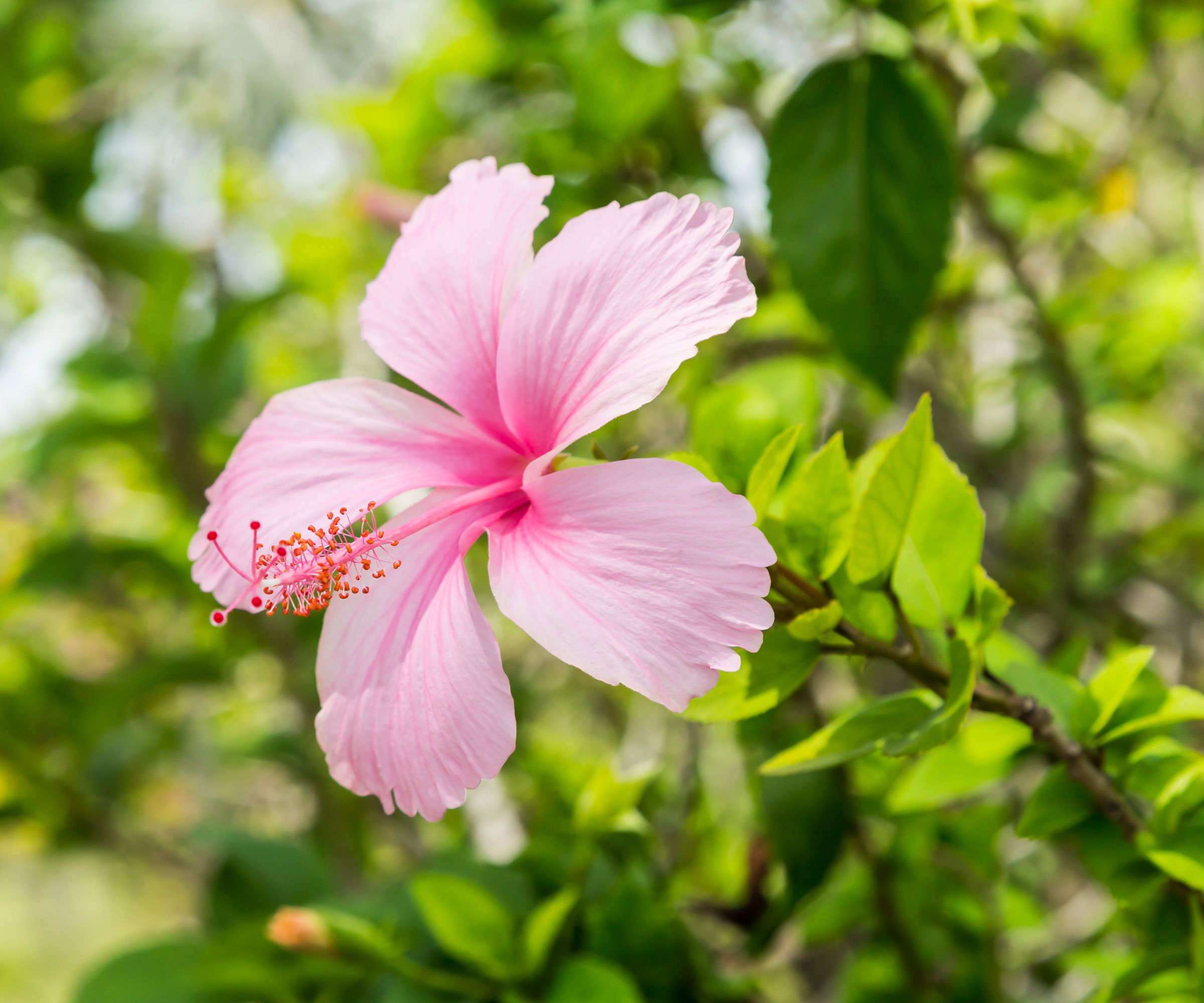
Though often overlooked in pollinator beds, hibiscus will attract a number of valuable native and migrating species to the home landscape. Exceptionally large flowers, available in shades of pink and red, help to create lush tropical spaces. This makes them a gorgeous choice for pools, patios and a variety of other gathering areas.
When you care for hibiscus plants, you’ll find that dwarf cultivars perform well under container culture, tolerating both heat and humidity. Though many species can be grown only in frost-free regions, cold-hardy types are also available to gardeners living outside of these zones.
7. Monarda
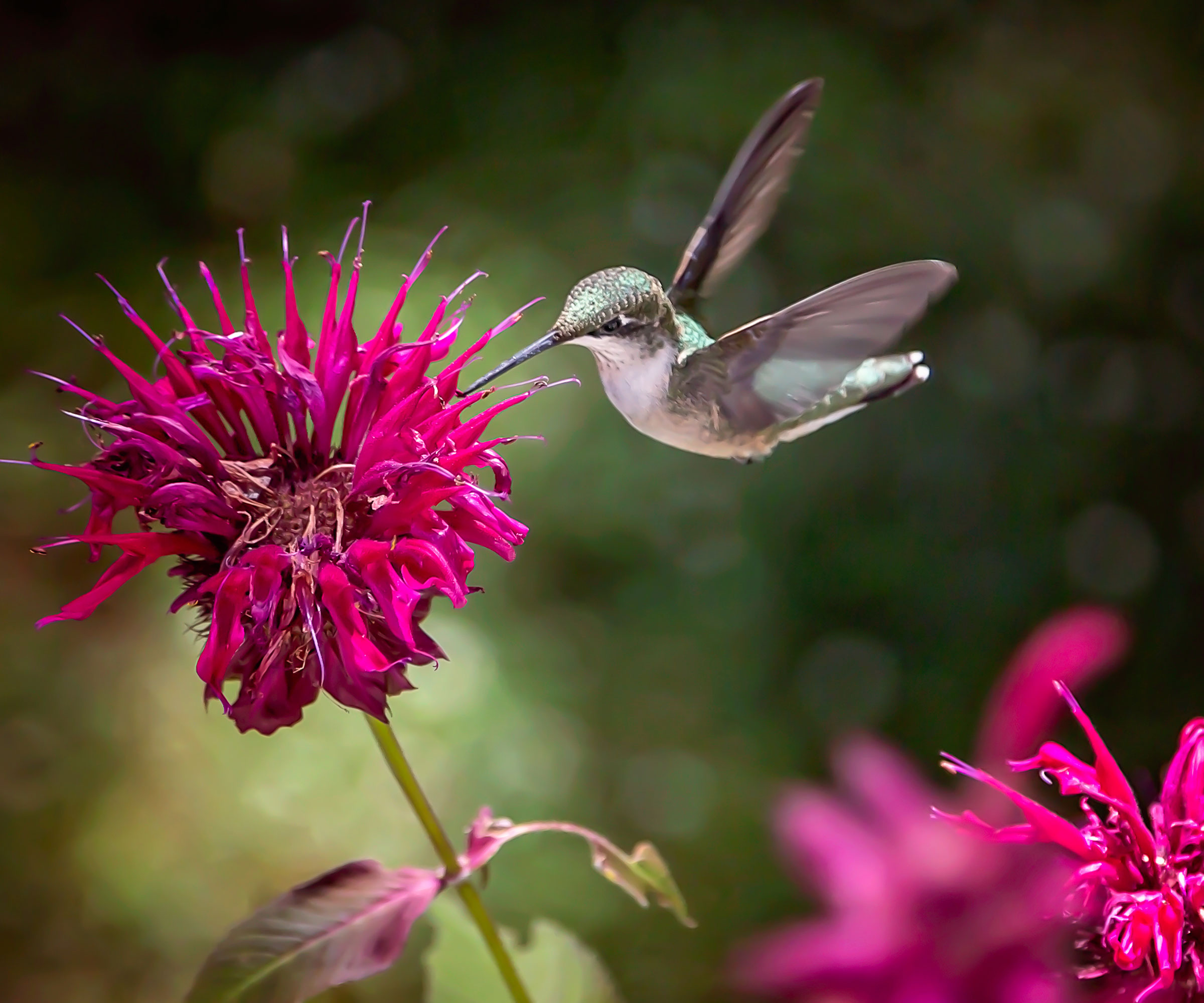
You may already be familiar with monarda (aka bee balm) and its unique ability to lure beneficial insects. However, they are also highly alluring to hummingbirds. Large perennial shrubs grow to form dense hedges. Tall stems give way to an abundance of bright tubular blooms, ideal for hummers.
Their quick growth habit makes the plant well-suited to use across the landscape, and in wild or naturalized beds. In addition to feeding hummingbirds, bee balm plants will play host to a number insect species, aiding the development of larvae through summer. Bee balm is considered hardy through USDA zones 3-9.
8. Penstemon
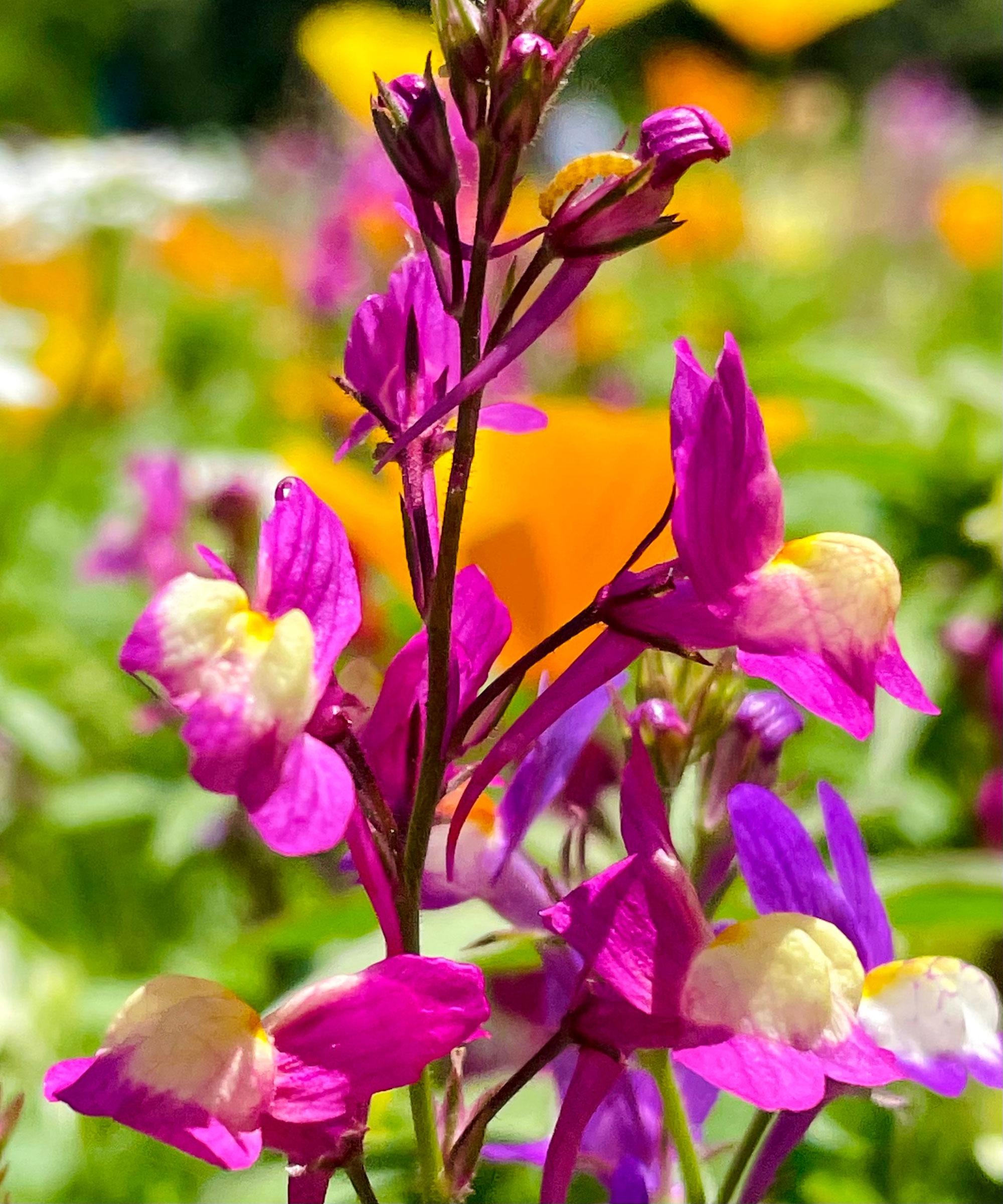
Penstemon has proven an especially important source of nectar among hummingbirds. Native plants, tolerant to a wide range of growing conditions, are especially well-suited to the home garden. Their small stature makes for an ideal addition to pots or containers, too.
When growing penstemon, you’ll find that these plants flourish with only a little care. Though tolerant to drought, consistent moisture through summer will promote growth and boost bloom. Popular varieties to attract hummingbirds include ‘Quartz Rose,’ ‘Mystica’ and ‘Midnight Masquerade’ penstemon. Most species are considered hardy in USDA zones 4-9.
9. Scarlet Sage
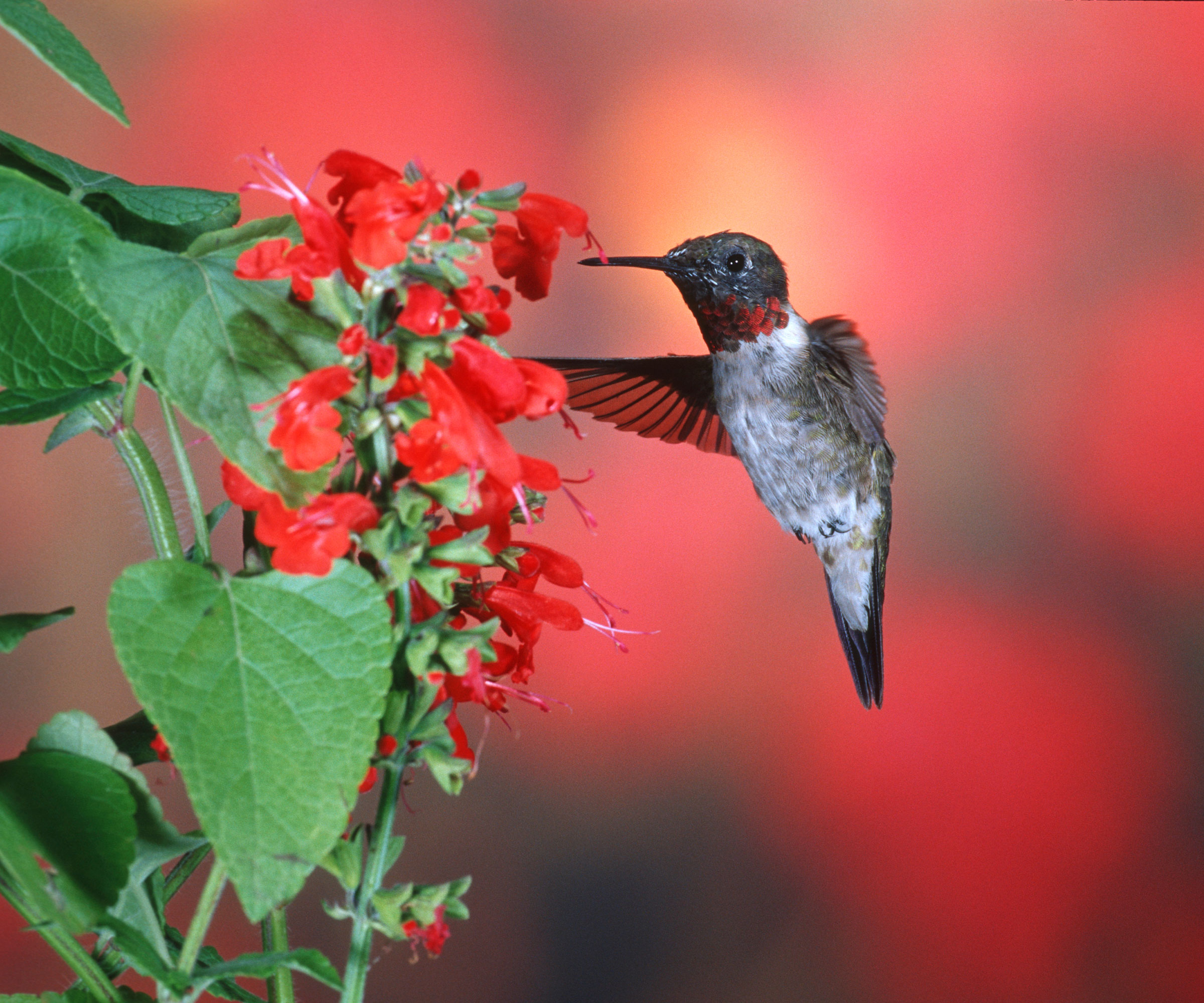
Scarlet sage (Salvia coccinea) plants are best known for their prolific red blooms. Mature plants remain small, making them suited to use in the front of established perennial beds, mixed borders and in containers. Easy-to-grow, sage plants thrive where they are able to receive ample light throughout the day.
If growing scarlet sage, you’ll find their resistance to disease and tolerance to pests enhances their appeal, making them a good choice for stunning carefree beds. You can expect plants to behave as a perennial through USDA zones 8-11.
10. Trumpet Vine
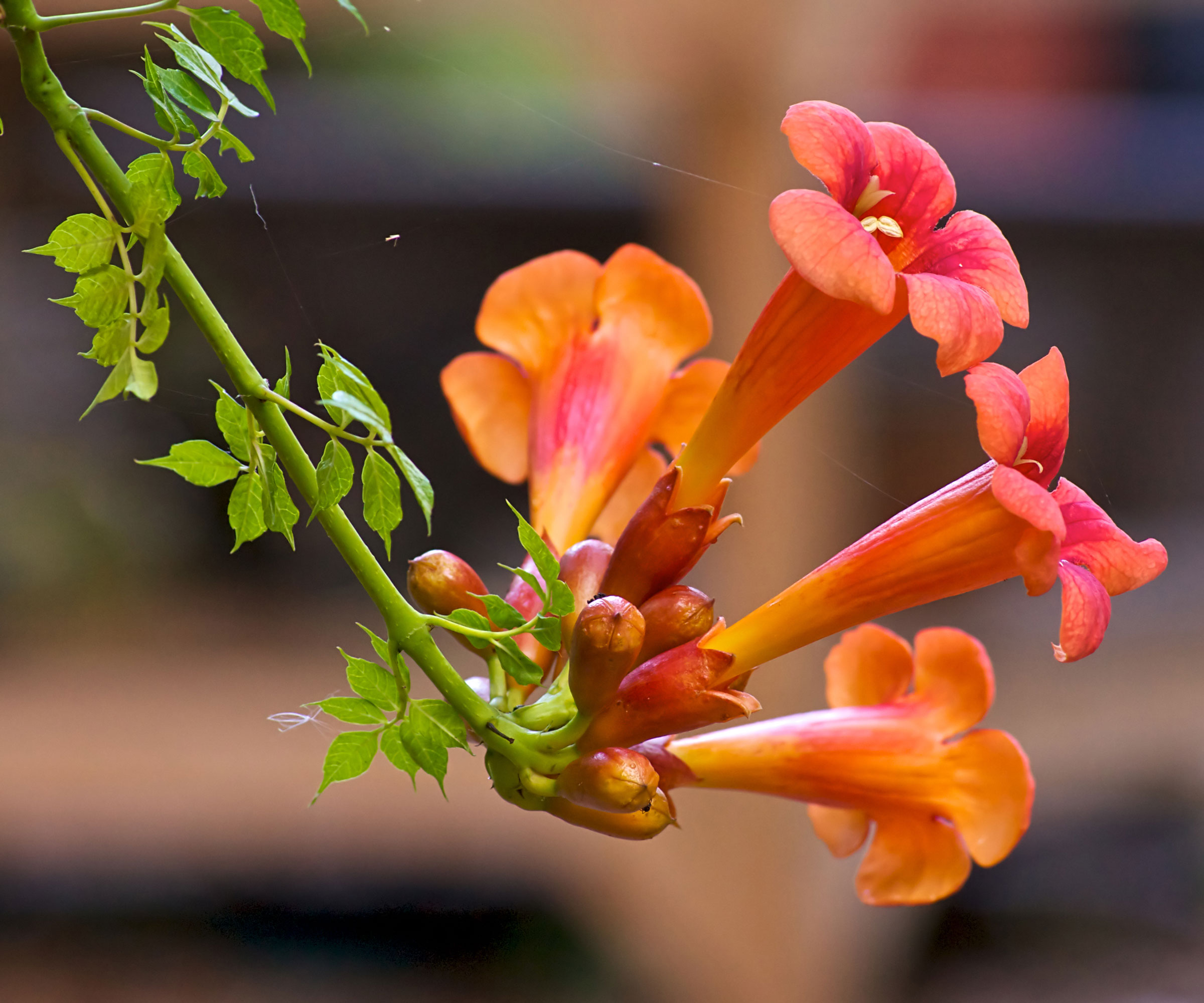
A robust native, trumpet vines (Campsis radicans) are among the best full-sun hummingbird plants. This is especially true of those with ample space, where these large vines are able to ramble across fences and trellises. Production of flowers will begin in summer, continuing through fall.
Tolerant to a wide range of growing conditions, you will find when growing trumpet vines that they demonstrate impressive vigor and a notable resistance to disease. Plants are considered hardy throughout USDA zones 4-9.
More Stunning Wildlife and Pollinator Ideas
- If you want to grow the most dynamic and appealing nectar-producing plants for honey bees and other pollinators, these nectar-rich ideas will get your yard buzzing.
- Looking to fill your backyard with birdsong? Here are the most common types of songbirds you are likely to see this year.
- Want to extend your garden welcome to bees and butterflies but short on space? Worry not, these potted pollinator garden plant ideas are ideal for compact corners.
- Love your butterflies and want to bring as many as possible to your garden this year? Grow our butterfly magnet flowers for a long season of delightful visitors.
- Want to bring even more feathered friends to your yard? These gifts for bird lovers round up a curated collection of plants, feeders, kits and other gardening incentives.
This article features products available from third party vendors on the Gardening Know How Shop. Keep in mind that our plant inventory is limited - so if you’re thinking of purchasing, don’t wait!
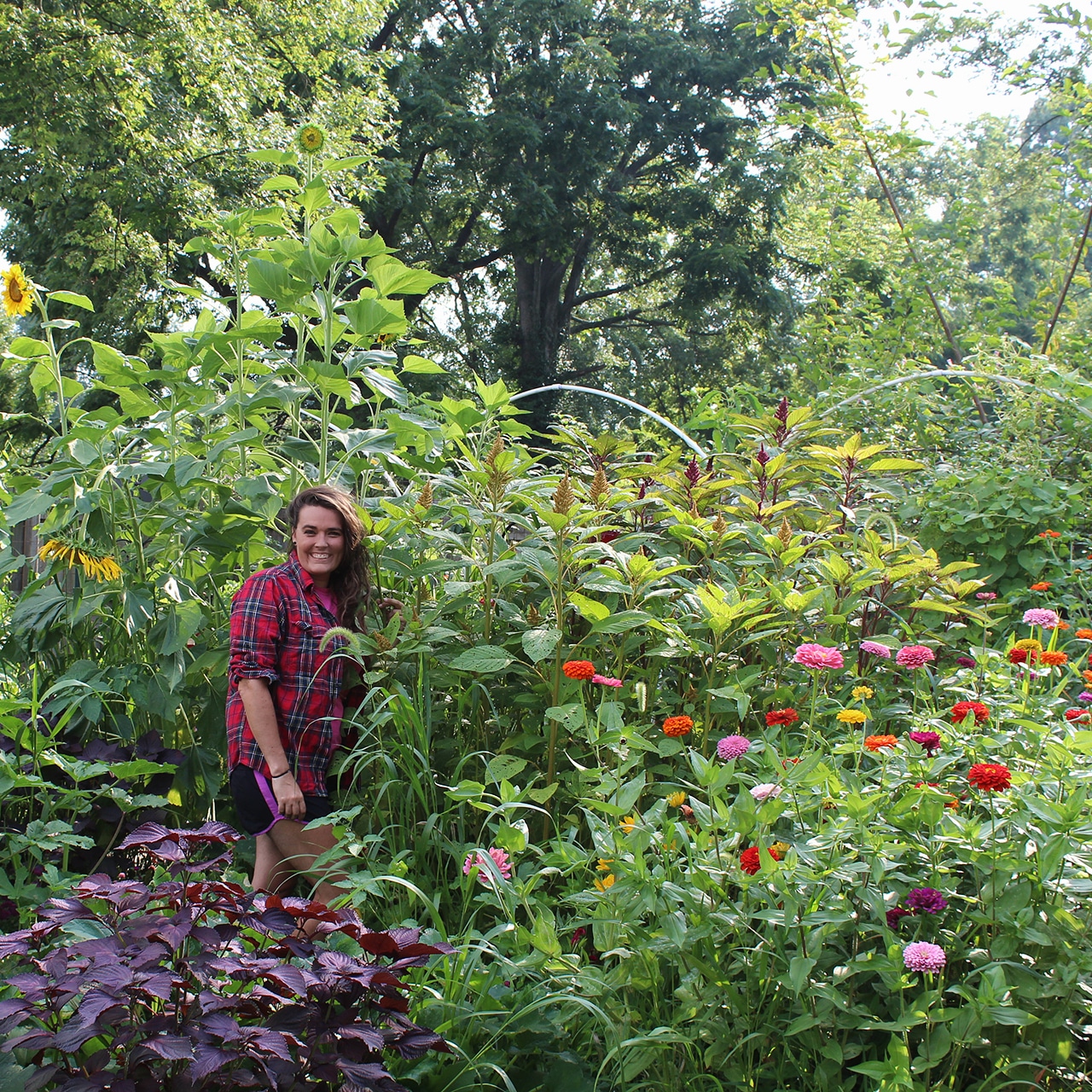
Tonya Barnett has been gardening for 13 years. Flowers are her passion. She has transformed her backyard into a cut flower garden, which she regularly chronicles on her YouTube channel http://www.youtube.com/@tonyawiththeflowers.
